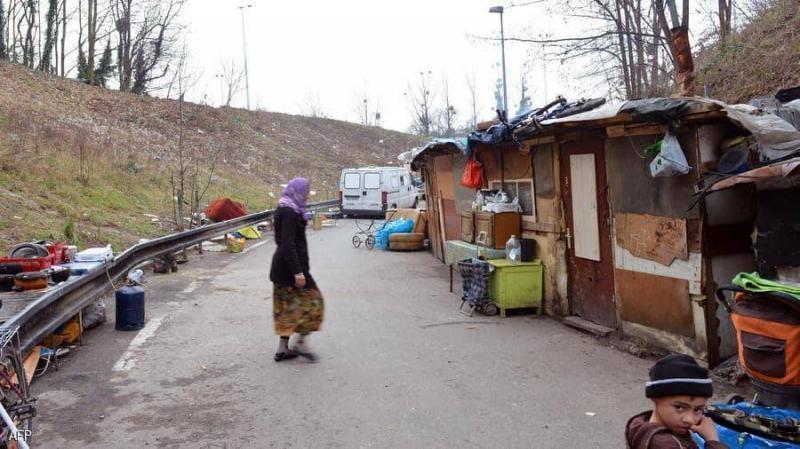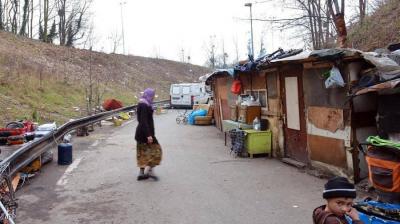Under the title "Integration of Migrants: A Crisis Approaches France Before the Elections," Sky News reported that "the clustering of migrants in the same neighborhoods may be useful at first, but it becomes a long-term barrier to their integration and that of their children." This is what a recent annual study by the Organization for Economic Cooperation and Development called "International Migration Outlook 2021" concluded. Six months before the presidential elections in France, the issue of migrant integration has become a prominent topic of discussion among candidates.
At the beginning of the election campaign, Valérie Pécresse, the candidate for the Republicans party, stated that "immigration has become uncontrollable, and France is suffering from a failure in integration," while French President Emmanuel Macron himself spoke of a "society in an integration crisis." According to the study, the phenomenon of concentration of migrants in the poorest neighborhoods and city suburbs is a "global" issue that extends beyond the OECD member countries.
Economist Grégory Verdugo from Évry Val d'Essonne University told Sky News Arabia that "most migrants in France come from outside the European Union." Statistics indicate that these migrants suffer from housing discrimination, as most live in social housing located in semi-urban areas. The study reveals that 11.1% of Africans arriving from Sub-Saharan countries live in the Seine-Saint-Denis department alone in the suburbs of Paris, where 7.5% of North African migrants have also resided since 2017.
The economist attributed this segregation and concentration in the suburbs to the fact that "a large portion of migrants belong to the poor class, and private housing rents are relatively high, requiring multiple guarantees and a certain socio-economic level, in addition to racial discrimination. This explains the high demand for social housing among non-European migrants, with one in two living in such accommodations."
Verdugo believes the impact of social housing varies based on its type. "There is a type referred to as 'sensitive neighborhoods,' which have seen a remarkable increase in recent years, characterized by a high density of migrant populations and widespread poverty, often situated in the suburbs." He adds, "There is another type that is less isolated, located in the city center, with medium population density, housing both migrants and middle-income French residents. In this case, integration is easier, and any talk of segregation is unlikely."
In the same context, the study's authors note that "housing in these segregated residential areas is often in poor condition and characterized by high levels of violence, pollution, and noise." In contrast, looking back at the history of social housing establishment in Europe, particularly in France, sociologist and researcher Mehdi Alioua from the International University in Rabat told Sky News Arabia that "the French state invested significant amounts of money in the 1970s to build housing for the poor and the workforce, employing the best architects and naming these neighborhoods positively. However, they were quickly criticized by the media and depicted negatively in films, despite the fact that their residents at that time were happy with the radical change in their lives compared to those who had moved from rural areas before migrants, as for the first time they had modern housing with running hot water and bathtubs."
He continues, "Instead of criticizing this housing for being distant from the center or having a specific population density, the focus should have been on the issue of limited job opportunities for this group and the racial discrimination they experienced, especially since many of the migrants came from France's colonies."
Regarding the impact of this residential segregation, economic expert and study author Gilles Spilvogel notes that its effects are "complex." He states, "It can have advantages for migrants who have just arrived, as it facilitates their forming a social network that helps them access work, housing, or even psychological support. However, in the long term, remaining in these areas can lead to negative consequences, such as lost opportunities for good jobs or difficulties in acquiring the host country's language and often hindering the educational progress of their children."
The sociologist agrees that the geographical concentration of new migrants has "significant" advantages. He explains to Sky News Arabia, "To achieve the integration of migrants into a society, they must first learn how to live in the host country. This occurs through intermediary figures who possess sufficient information about the migrants' world of origin and teach them the particulars of living in the host country. This is achieved through established migrants who pass on their experiences and information to newcomers directly or indirectly. Over time, the need for these community intermediaries, who do not necessarily belong to the same country, diminishes, as the exchange of experiences and language learning can occur between migrants of different nationalities, as happens between Algerians, Tunisians, and Moroccans, who share almost the same circumstances."
The sociologist asserts that "migrant integration occurs gradually and requires a key factor: obtaining a job opportunity, as it allows migrants to move out of enclaves and meet other people." On the other hand, regarding the lack of employment opportunities for this group of migrants, the economics professor notes, "Employers often avoid hiring migrants from sensitive neighborhoods due to concerns about the environment in which they were raised. In other cases, geographical distance and difficulties in commuting may contribute to the lack of opportunities. An important factor also lies in the quality of education received in schools in these neighborhoods."
In another aspect, the study reveals that "in most European OECD countries, the concentration of migrant children in schools within these neighborhoods acts as a barrier affecting their academic performance, especially in countries like Germany, Austria, Belgium, France, Greece, the Netherlands, and Sweden." This is primarily explained by the social and economic status of the families of migrant students, as mothers of students attending these schools are likely to have low educational levels. Additionally, many students do not speak the host country's language at home or with their classmates, as clarified by Gilles Spilvogel, a co-author of the study.
Maryam, a Moroccan housewife and mother of three children living in Lyon, shares this experience with Sky News Arabia. She describes living in a neighborhood where Maghreb migrants make up about 80%, all coming from low-income backgrounds. She continues, "We speak Moroccan Arabic at home so our children can learn the language of their original country. However, this poses a barrier for them in primary school, as their vocabulary in French is weak. My three children have seen a speech and language therapist to improve their language skills, and the school has provided them with volunteer aides, offering extra hours in subjects I cannot assist them with."
In general, the study concludes that migrants living in isolated areas often have choices, and the implemented policies should not primarily aim to avoid the residential segregation of migrants but to provide them with more opportunities to leave these areas. In this context, the sociologist believes that remaining in these segregated areas long-term is fundamentally linked to economic status and not to the migrant's racial origin, as those who excel academically or successfully establish their projects tend to leave immediately, while those who remain do so because they lack the social conditions to leave, not due to cultural reasons.




